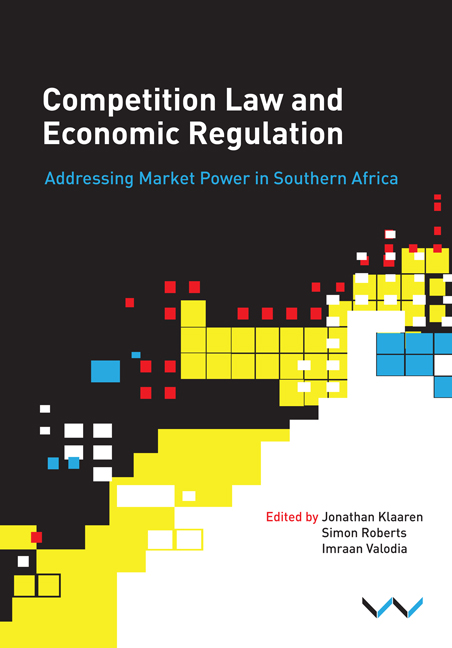 Competition Law and Economic Regulation in Southern Africa
Competition Law and Economic Regulation in Southern Africa Book contents
- Frontmatter
- Contents
- Tables, figures and boxes
- Acknowledgements
- Acronyms and abbreviations
- Introduction: The development of competition and regulation in southern Africa
- Part One Cartel law enforcement
- Part Two Issues in competition and regulation
- Part Three Competition and regulation in reshaping African markets
- 6 How multinational investments in grain trading are reshaping Zambia's market
- 7 Competition and incumbency in South Africa's liquid fuel value chain
- 8 South Africa's renewable energy experience: Inclusive growth lessons
- 9 Competition and regulation in Zimbabwe's emerging mobile payments markets
- 10 Evaluating the competitiveness of Zimbabwe's poultry industry
- Part Four Conclusion
- Contributors
- Index
8 - South Africa's renewable energy experience: Inclusive growth lessons
from Part Three - Competition and regulation in reshaping African markets
Published online by Cambridge University Press: 23 March 2018
- Frontmatter
- Contents
- Tables, figures and boxes
- Acknowledgements
- Acronyms and abbreviations
- Introduction: The development of competition and regulation in southern Africa
- Part One Cartel law enforcement
- Part Two Issues in competition and regulation
- Part Three Competition and regulation in reshaping African markets
- 6 How multinational investments in grain trading are reshaping Zambia's market
- 7 Competition and incumbency in South Africa's liquid fuel value chain
- 8 South Africa's renewable energy experience: Inclusive growth lessons
- 9 Competition and regulation in Zimbabwe's emerging mobile payments markets
- 10 Evaluating the competitiveness of Zimbabwe's poultry industry
- Part Four Conclusion
- Contributors
- Index
Summary
INTRODUCTION
As a middle-income country with high levels of poverty, inequality and unemployment, and a legacy of historically skewed economic participation, South Africa has been grappling with socioeconomic issues since the democratic dispensation in 1994 (NPC, 2011). As in many other developing countries, economic growth, even when sustained for a period of time, has not translated into equal opportunity and equal access to markets and resources for poor and marginalised groups, perpetuating high inequality levels (see De Mello and Dutz, 2012).
This entrenched situation has precluded inclusive growth. The term ‘inclusive growth’ is often used interchangeably with ‘broad-based’, ‘shared’ or ‘pro-poor growth’, referring to growth which encapsulates both improved participation and benefit sharing (Ranieri and Ramos, 2013). Broader, more dynamic perspectives of inclusive growth further include opening up new sectors and harnessing existing sectors to produce more value-added offerings. These rely on significant investments in productive capabilities and skills (Khan, 2012).
It is fairly uncontroversial that growth must be broad-based to be sustainable in the long run, both across sectors in the economy and across a large proportion of a country's labour force (Acemoglu and Robinson, 2012; Ianchovichina and Lundstrom, 2009; Khan, 2012). While economic growth is a prerequisite for poverty reduction, it is well recognised that it does not guarantee that everyone benefits equally. South Africa seeks to achieve more inclusive growth as envisioned in the country's New Growth Path (EDD, 2010). The country's strategy to achieve inclusive growth, particularly increased employment growth and lower income inequality, is set out in the National Development Plan: Vision for 2030 (NPC, 2011). These policy drivers recognise the importance of a competitive, diversified and more inclusive economy in improving trade performance, job creation and revenue generation (National Treasury, 2013).
Achieving such inclusive goals requires government intervention through appropriately designed, coordinated and implemented policies, with the aim of creating new economic opportunities and ensuring greater participation. Intervention, including through regulation, can take the form of removing barriers to participation and creating a more level playing field or actively formulating policies that, by their very design, mandate participation by previously marginalised groups (Ianchovichina and Lundstrom, 2009).
- Type
- Chapter
- Information
- Competition Law and Economic Regulation in Southern AfricaAddressing Market Power in Southern Africa, pp. 189 - 214Publisher: Wits University PressPrint publication year: 2017
